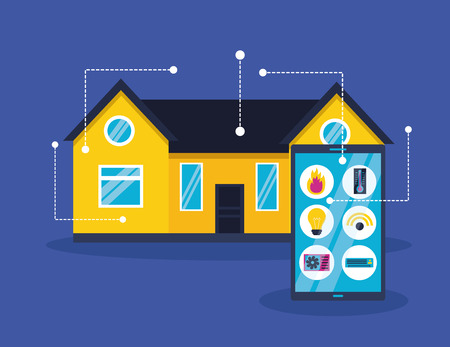Understanding the Indian Approach to Home Lighting
Lighting in Indian homes goes far beyond mere functionality; it is deeply rooted in culture, tradition, and social customs. Traditionally, Indian households have relied on oil lamps, diyas, and lanterns not only to illuminate spaces but also to symbolize positivity and spiritual well-being. Festivals like Diwali are centered around lighting, with homes adorned in glowing lamps to welcome prosperity and dispel darkness. Over time, urbanization and technological advancements have introduced modern lighting options such as LED bulbs, smart lamps, and automated fixtures. Today’s Indian families blend these contemporary solutions with traditional preferences, creating a unique harmony between heritage and innovation. This evolution reflects a broader desire for energy efficiency while preserving the cultural significance of illumination—making smart lighting and energy management solutions especially relevant for Indian homes seeking comfort, savings, and cultural continuity.
2. What Is Smart Lighting? Key Features and Benefits
Smart lighting has rapidly become a key element in modern Indian homes, offering much more than just illumination. By integrating intelligent technology with daily living, smart lighting systems transform the way Indians interact with their home environments. Here’s an introduction to what smart lighting is, its essential features, and how it delivers significant advantages tailored for Indian households.
Understanding Smart Lighting
Smart lighting refers to lighting systems that can be controlled remotely through mobile apps, voice assistants like Alexa or Google Home, or automated schedules. Unlike traditional bulbs, these lights use sensors and connectivity (Wi-Fi or Bluetooth) to offer seamless control and customization. In India’s fast-paced urban centres as well as evolving tier-II cities, this enables residents to manage energy usage more efficiently and enhance comfort at home.
Core Features of Smart Lighting
| Feature | Description | Benefit for Indian Homes |
|---|---|---|
| Remote Control | Operate lights using smartphones or voice commands. | No need to get up during power cuts or late-night hours; ideal for elders and children. |
| Customisable Ambience | Adjust brightness and colour temperature to match mood or activity. | Create festive lighting for Diwali or soothing tones for relaxation; perfect for diverse Indian celebrations. |
| Scheduling & Automation | Set timers or routines based on daily needs. | Lights turn on/off automatically during prayer time (puja) or after dark for security. |
| Energy Efficiency | LED technology and smart controls reduce electricity consumption. | Lowers electricity bills—a major concern in many Indian households. |
| Integration with Other Devices | Connect with smart fans, ACs, or security systems. | Unified control increases convenience and safety in multi-generational homes. |
The Advantages: Convenience, Ambience & Customization for India
Convenience: Imagine controlling every light from your phone while cooking in the kitchen or relaxing in your drawing room. For busy families and elders alike, this ease of use is a real value-add.
Ambience: With one tap, shift from bright white light for studying to warm yellow for evening chai time. The ability to set scenes enhances both everyday living and special occasions—be it Holi parties or movie nights.
Customization: Each family member can create their own settings, supporting a personalised experience that reflects individual preferences. Whether you need brighter lights for remote work or subtle glows for meditation, smart lighting adapts to your lifestyle.
In summary, smart lighting solutions are designed to address the practical needs and cultural nuances of Indian homes. They not only bring technology into daily routines but also deliver cost savings, comfort, and a touch of sophistication—making every home smarter and more inviting.

3. Energy Management in the Indian Context
Indias rapid urbanisation and economic growth have led to a surge in household electricity consumption, making energy management a critical concern for millions of families. With rising electricity tariffs across states, many Indian homeowners are feeling the pinch on their monthly budgets. In cities like Mumbai, Bengaluru, and Delhi, high power bills are becoming a common challenge, especially during peak summer months when air conditioning and fans run non-stop.
Smart lighting and energy management solutions offer a modern answer to these challenges. By integrating technologies such as motion sensors, automated dimming, and scheduled lighting controls, Indian households can significantly reduce unnecessary power usage. For example, smart LED bulbs can automatically adjust brightness based on natural light availability or room occupancy, ensuring that lights are only used when needed. This not only conserves energy but also extends the lifespan of lighting fixtures.
Moreover, smart plugs and energy monitoring devices allow users to track real-time electricity consumption of various appliances. Through mobile apps tailored for Indian users, homeowners can receive insights and recommendations on how to optimise their usage patterns. These actionable tips help families identify which devices are consuming the most power—whether it’s the geyser in North India’s chilly winters or cooling units in Chennai’s humid climate—and make informed decisions about when and how long to operate them.
As government initiatives like UJALA (Unnat Jyoti by Affordable LEDs for All) continue to promote energy-efficient products, the adoption of smart energy management systems is poised to become mainstream in Indian homes. The combination of policy support and innovative technology means that households not only save money but also contribute towards a greener India by reducing their carbon footprint.
4. Integrating Smart Lighting into Indian Homes
Upgrading to smart lighting systems in Indian homes can significantly enhance comfort, convenience, and energy efficiency. However, each type of home—be it a modern apartment in Mumbai, an independent house in Bengaluru, or a heritage bungalow in Kolkata—presents unique challenges and opportunities. Here’s a practical guide to integrating smart lighting across different Indian residential settings.
Smart Lighting Solutions for Apartments
Apartments are the most common form of urban housing in India. Space constraints and shared infrastructure often limit wiring modifications, but wireless smart bulbs and plug-and-play devices make upgrades easy.
| Apartment Type | Recommended Smart Lighting | Installation Tips |
|---|---|---|
| Studio/1BHK | Wi-Fi/Bluetooth-enabled LED bulbs; Smart plugs | Opt for app-controlled lights to avoid extra switches; use motion sensors for kitchen/bathroom |
| 2-3BHK | Voice assistant compatible lights; Dimmable fixtures | Centralise control with a single hub; consider scene-setting for living and dining areas |
Independent Houses: Customisation & Zoning
Independent houses, often found in tier 2 and tier 3 cities, offer more flexibility for wiring and system integration. Zoning your lighting based on activity (e.g., pooja room, study area, terrace) maximises both utility and aesthetics.
- Main Living Spaces: Use automated schedules for verandahs and living rooms to save power during peak hours.
- Kitchens & Bathrooms: Install humidity-resistant smart LEDs and occupancy sensors for safety and efficiency.
- Outdoor Areas: Weatherproof smart lights with dusk-to-dawn sensors keep gardens secure while reducing manual effort.
Heritage Bungalows: Preserving Charm with Modern Tech
Heritage bungalows require careful integration to retain their architectural elegance. Wireless retrofitting is ideal as it avoids damage to vintage walls and ceilings. Choose warm-toned, dimmable smart bulbs that complement period features like wooden beams or stained glass windows.
| Bungalow Area | Smart Lighting Suggestion |
|---|---|
| Main Hall & Corridors | Sensors + dimmable bulbs for soft transitions at night |
| Pillared Verandah | Smart lantern-style outdoor fixtures with remote control |
| Pooja Room/Prayer Area | Tunable white LEDs to adjust light warmth during rituals |
Pro Tips for Every Indian Homeowner:
- Select products compatible with popular platforms like Google Assistant or Amazon Alexa for hassle-free control.
- If you face frequent power cuts, choose smart bulbs with built-in battery backup or solar-powered options.
- Consider local brands offering after-sales support in major Indian cities—reliability is key!
- Avoid overloading circuits when retrofitting older homes by consulting a certified electrician familiar with Indian standards (IS codes).
Conclusion:
No matter the type of home, integrating smart lighting in India is now simpler than ever. By choosing solutions tailored to your space and lifestyle needs, you can enjoy higher energy savings, improved security, and an upgraded living experience—all while embracing the spirit of modern Indian innovation.
5. Popular Products and Local Brands in India
Smart Lighting Devices: Choices for Every Indian Home
The Indian market has witnessed a surge in smart lighting solutions tailored to the needs of local consumers. From affordable Wi-Fi-enabled LED bulbs to advanced mood lighting systems, homeowners now have access to a variety of options. Philips Hue and Syska SmartLights are among the most recognized choices, offering easy app-based controls, voice assistant compatibility, and energy-efficient performance. For those seeking basic automation, Wipro Next Smart LED Bulbs provide reliable features at wallet-friendly prices.
Homegrown Brands Shaping the Market
While international brands have a presence, homegrown companies are making significant strides in both technology and affordability. Companies like Halonix, Crompton Greaves, and Orient Electric have introduced smart lighting devices designed with Indian households in mind—focusing on durability to withstand voltage fluctuations and user-friendly mobile integration. These brands often partner with leading e-commerce platforms such as Flipkart and Amazon India for wider reach and accessible after-sales support.
Energy Management Solutions: Budget-Friendly Innovations
Indian innovators are also addressing energy management. Tata Power EZ Home and Oakter Smart Plugs allow users to monitor electricity consumption and automate appliances without costly rewiring. These solutions are tailored for India’s diverse housing scenarios—from compact city flats to spacious bungalows—and prioritize ease of installation, low maintenance, and reasonable pricing.
Affordability: A Key Factor for Indian Consumers
One of the major drivers behind the popularity of smart lighting and energy management products in India is their affordability. Many local brands offer starter kits under ₹1,500, making it feasible for middle-class families to begin their smart home journey. With competitive pricing, regular discounts during festivals like Diwali, and increasing support from government initiatives promoting energy efficiency, adopting these technologies is becoming more attainable than ever.
The Verdict: Value Meets Innovation
As the demand for smarter homes rises across urban and semi-urban India, locally made smart lighting and energy management devices stand out for blending innovation with practical value. By focusing on affordability, cultural preferences, and reliability, these products empower Indian homeowners to transform their living spaces while managing energy costs effectively.
6. Overcoming Challenges: Connectivity, Budget, and Compatibility
When it comes to adopting smart lighting and energy management solutions in Indian homes, several practical hurdles often come into play. Understanding and addressing these barriers is key to ensuring that families across India can truly benefit from the latest innovations in home automation.
Reliable Wi-Fi: The Backbone of Smart Homes
Stable internet connectivity is essential for seamless operation of smart devices. In many Indian cities and towns, fluctuating Wi-Fi can be a real concern. Families may worry about frequent dropouts or insufficient coverage in larger homes. To tackle this, consider investing in mesh Wi-Fi systems or range extenders, which are becoming more affordable and readily available across India’s major electronics retailers. Many modern smart lighting brands also offer offline controls or Bluetooth fallback options, allowing users to maintain basic functionality even when the network is down.
Varied Budgets: Smart Upgrades for Every Indian Home
Budget constraints are a common concern for Indian households looking to upgrade their home technology. Fortunately, the market now offers a wide spectrum of products—from entry-level smart bulbs under ₹500 to comprehensive energy management hubs. For those starting out, prioritize devices that offer the greatest impact for your lifestyle, such as remote-controlled LED bulbs or energy monitoring plugs. Look out for seasonal sales and government incentives promoting energy efficiency, as these can make upgrading more accessible for middle-class families.
Compatibility with Existing Décor
Indian homes are known for their vibrant colours, traditional wooden furniture, and unique architectural styles. Integrating modern technology without disrupting this aesthetic can be challenging. Leading smart lighting brands now offer customisable options—such as tunable white and RGB lights—that blend seamlessly with both contemporary flats and heritage bungalows. Modular switches and retrofittable smart controllers mean you don’t have to overhaul your existing décor or electrical wiring. Consult with local interior designers who have experience merging technology with traditional Indian styles for best results.
Practical Tips for Indian Families
- Choose scalable solutions that let you start small and expand over time.
- Opt for brands with robust after-sales service networks in India.
- Read product reviews from fellow Indian users to gauge reliability and real-world performance.
A Future-Proof Investment
By proactively addressing connectivity issues, working within your budget, and selecting tech that complements your home’s look, Indian families can confidently embrace smart lighting and energy management solutions—transforming daily living while enhancing comfort and efficiency.
7. Brightening Up: Future Trends and Practical Tips
As Indian households embrace the smart home revolution, the landscape of lighting and energy management is evolving rapidly. Here’s a look at the latest trends making waves across urban and semi-urban India, along with expert-backed tips to help families seamlessly integrate these innovations into daily life.
Emerging Trends in Smart Lighting for Indian Homes
Voice-Controlled & App-Based Solutions
With increasing smartphone penetration, Indian homeowners are gravitating towards voice assistants like Alexa and Google Home, as well as intuitive mobile apps, for effortless control over lighting. These systems support multiple Indian languages, making smart lighting more accessible than ever before.
Sustainable & Solar-Powered Options
Given Indias sunny climate, solar-powered smart lights are gaining traction. Homeowners in cities like Pune, Ahmedabad, and Hyderabad are installing rooftop solar panels that power not just their lights but also other essential devices—reducing both carbon footprint and electricity bills.
Automated & Adaptive Lighting
Modern smart bulbs can now adjust brightness and colour temperature automatically based on the time of day or occupancy sensors. This adaptive technology helps maintain comfort and productivity while maximising energy efficiency—perfect for India’s dynamic family routines.
Energy Management Tailored for Indian Lifestyles
Smart Meters & Real-Time Monitoring
The rollout of smart meters by DISCOMs (Distribution Companies) in many states enables families to monitor their electricity consumption in real-time via dedicated apps. This transparency encourages mindful usage and empowers residents to make cost-saving adjustments instantly.
Integration with Local Power Grids
Some advanced energy management systems now allow integration with local grid schedules and even backup generators or inverters—a must for areas facing frequent load shedding. This ensures uninterrupted comfort without unnecessary wastage.
Expert Tips for Easy Adoption
- Start Small: Replace traditional bulbs with smart LEDs in key areas like living rooms and kitchens before scaling up.
- Leverage Government Incentives: Watch out for schemes from BEE (Bureau of Energy Efficiency) or state governments that offer subsidies on energy-efficient products.
- Prioritise Compatibility: Check if your chosen devices support regional languages and integrate smoothly with existing home appliances.
- Create Custom Schedules: Use automation features to set lights according to daily prayer times (puja), study hours, or family gatherings.
Towards a Brighter, Greener Future
The future of Indian homes lies in smart, sustainable solutions that blend modern technology with local needs. By adopting these emerging trends and practical tips, families can enjoy greater convenience, lower bills, and contribute to a greener Bharat—one switch at a time.

